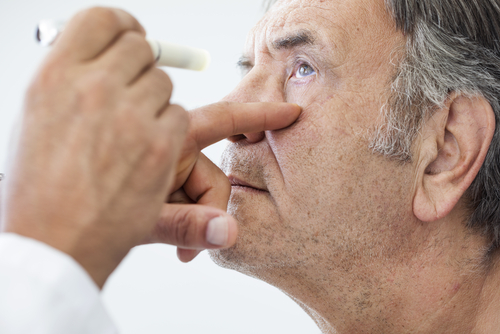Signs of Aging Eyes
Category:

Beginning in their early to mid-40s, older adults start experiencing problems with vision. This is especially prevalent in people with systemic conditions — such as diabetes or high blood pressure — or who have a family history of eye diseases. When you have these vision changes, it can lead to several questions. Does depth perception decrease with age? Should I be alarmed by these spots in my eyes? How can I reduce signs of aging eyes? In this post, we will answer all of your questions about aging eyes.
Common Signs of Aging Eyes
When your eyes age, you should pay attention to some warning signs. These common signs include:
-
One eye sees less light or one eye is slow to adjust to the dark
-
Eyes need more light to see
-
Waviness in vision
-
Difficulty reading
-
Changes in color perception
-
Spots or floaters in your vision
-
Red, swollen eyelids
-
Glare sensitivity
-
Seeing distorted images
-
Decrease in-depth perception
-
Objects bleeding into the background
-
Dry eyes
-
Tearing
You can test your vision by performing tests such as looking at Amsler grid double lines but you should also speak to a doctor if you have any concerns about your vision. Next up, we will review some common age-related eye conditions.
Common Age-Related Eye Conditions
If your eyes start to show signs of aging, you could potentially have a serious eye condition, some of which are listed below. Of course, you should always see your doctor for a proper diagnosis.
-
Amblyopia. You experience dimness of vision, especially in one eye without an apparent physical defect or disease.
-
Anisometropia. The refractive power of one eye differs from that of the other.
-
Cataract. The natural lens of the eye is clouded.
-
Glaucoma. The nerve connecting the eye to the brain is damaged and can eventually cause blindness.
-
Keratoconus. The cornea thins and starts bulging out, creating a cone shape that causes distorted or wavy vision and makes it difficult to see while reading or driving.
-
Macular degeneration. The cells of the macula lutea degenerate, resulting in blurred vision and eventual blindness.
-
Presbyopia. You lose the ability to see close objects or small print.
Now that we know more about some eye-related conditions and their symptoms, let’s take a look at ways to reduce signs of aging eyes.
Tips for Reducing Signs of Aging Eyes
We are now armed with more information about aging eyes. But how can we prevent these issues? Below, you will find some steps you can take.
-
Check with your family physician. Conditions such as diabetes or high blood pressure can cause eye problems. Speak to your doctor to see if you have any of these conditions and get treatment.
-
Visit your ophthalmologist or optometrist. Make an appointment with your doctor every year and check-in if you have any sudden vision loss, blurred vision, eye pain, redness, swelling, or discharge
Get your pupils dilated. If you do have diabetes or have a family history of eye disease, you should have an eye exam and get your pupils dilated at least once a year. Your doctor will also test your eyesight and check for glaucoma through this method, which is completed by the doctor administering eye drops to enlarge your pupils.
Subscribe
Date: May 10, 2022
Category:


